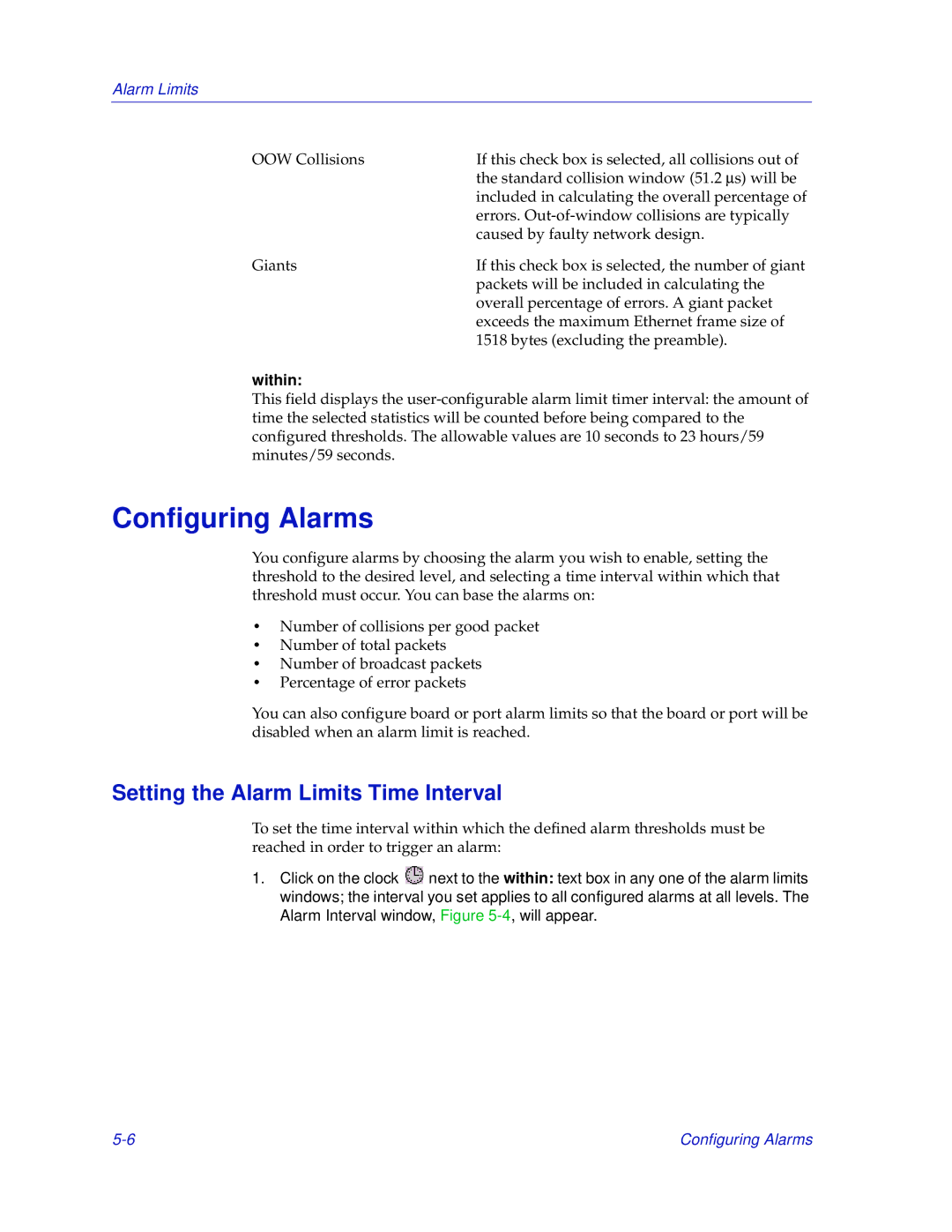Alarm Limits
OOW Collisions | If this check box is selected, all collisions out of |
| the standard collision window (51.2 μs) will be |
| included in calculating the overall percentage of |
| errors. |
| caused by faulty network design. |
Giants | If this check box is selected, the number of giant |
| packets will be included in calculating the |
| overall percentage of errors. A giant packet |
| exceeds the maximum Ethernet frame size of |
| 1518 bytes (excluding the preamble). |
within:
This field displays the
Configuring Alarms
You configure alarms by choosing the alarm you wish to enable, setting the threshold to the desired level, and selecting a time interval within which that threshold must occur. You can base the alarms on:
•Number of collisions per good packet
•Number of total packets
•Number of broadcast packets
•Percentage of error packets
You can also configure board or port alarm limits so that the board or port will be disabled when an alarm limit is reached.
Setting the Alarm Limits Time Interval
To set the time interval within which the defined alarm thresholds must be reached in order to trigger an alarm:
1.Click on the clock ![]() next to the within: text box in any one of the alarm limits windows; the interval you set applies to all configured alarms at all levels. The Alarm Interval window, Figure
next to the within: text box in any one of the alarm limits windows; the interval you set applies to all configured alarms at all levels. The Alarm Interval window, Figure
Configuring Alarms |
